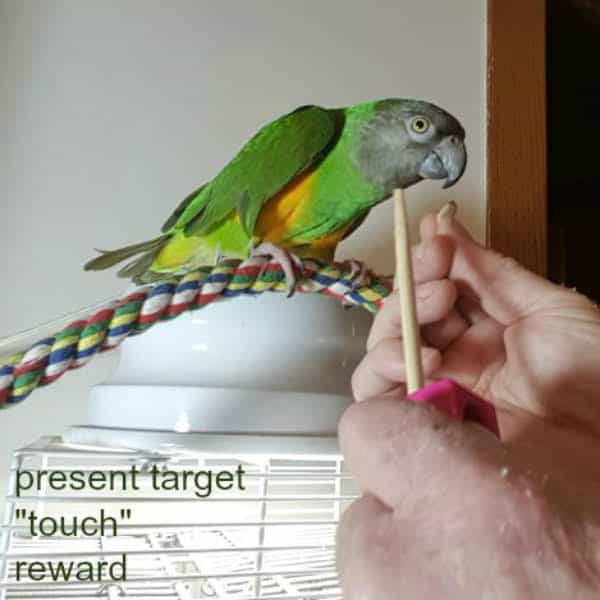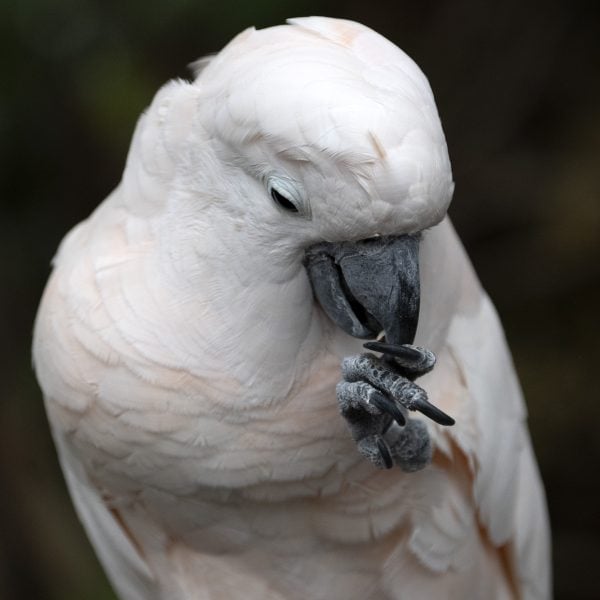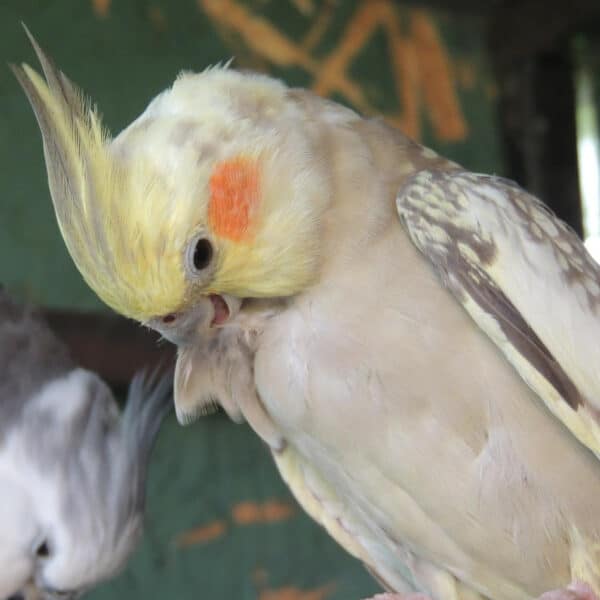
Training Your Parrot Tips and Tricks for Effective Communication
Last Updated on by Catherine Tobsing
Understanding Parrot Behavior: The Key to Effective Training
Training a parrot is not just about teaching it to mimic words or perform tricks; it involves understanding its behavior and communication style.
Parrots are highly intelligent birds with distinct personalities, and they require a unique approach to training.
To effectively communicate with your pet bird, it is crucial to recognize its body language and vocalizations.
These can vary from bird to bird, but common signs of comfort, discomfort, excitement, or fear can be identified with careful observation.
Establishing this understanding lays the foundation for a strong, trusting relationship between you and your feathered companion.
Creating a Positive Learning Environment
Your bird’s learning environment plays a vital role in its training success.
Ensure that your parrot’s habitat is safe, comfortable, and stimulating.
A spacious cage, opportunities for free flight in a secure area, and a variety of toys can significantly impact your parrot’s willingness to learn and engage.
How bird safe is your home ~ Video
Additionally, maintaining a consistent schedule for training, feeding, and playtime helps establish a routine, making your parrot more receptive to learning.
I’ve often said, “Birds can tell time as accurately as a Rolex”. If you’ve been around pet birds, if your schedule is NOT consistent expect your birds to let you know.
Signals can be anxiety like pacing, multiple screeches (Keto), and incessant screaming.
Birds will for the most part telegraph what they are feeling.
Disappointment can be hard to spot.
Conversely, Keto our ringneck talks to his food expressing happiness.
If you’re new to indoor birding learning how your bird speaks can take time.
Barney realized he could get skritches on demand – that took 2 years.
The Basics of Parrot Training: Patience and Consistency
Spoiler alert, birds can be very patient and sometimes very impatient.
Patience and consistency are the cornerstones of parrot training.
Always approach training sessions with a calm and positive demeanor.
Parrots, like many animals, are highly sensitive to their owner’s emotions and can become stressed or uncooperative if they sense frustration or anger.
Consistent training sessions, even if they are short, are more effective than sporadic, lengthy sessions.
Five minutes a day will positively alter the relationship with your bird.
Regular, positive interactions build trust and make each training session something your parrot looks forward to.
Effective Communication Techniques
Communication with your parrot is not just about verbal commands.
Non-verbal cues such as gestures and facial expressions play a significant role. For instance, nodding and smiling when your parrot performs a desired behavior reinforces positive actions more effectively than verbal praise alone.
Likewise, a calm and gentle tone of voice can soothe and encourage your parrot, making the training process more enjoyable for both of you.
Reward-Based Training: Encouraging Desired Behaviors
Utilizing a reward-based training approach is highly effective with parrots.
This method involves rewarding your parrot for desired behaviors, thereby increasing the likelihood of these behaviors being repeated.
I’ll note here that parrots don’t respond to negative training like using the word “no.”
Think about it, how many lessons on morality have you taught your bird?
Have you designed a training process that teaches your bird “no?”
Are you able to teach your bird between large bird toys and furniture?
Of course not, which is why it’s so important to use positive reinforcement for all teaching and training.
Rewards can vary; they might be treats, verbal praise, or physical affection.
If you’re in a training session use great that are Identifying what motivates your parrot is key to this approach.
Most parrots respond better to food rewards, while others prefer social interaction or playtime.
My choice for smaller birds is a sunflower kernel. A sunflower seed that has a shell takes too long for the bird to peel which causes you to lose “training momentum.
It’s essential to offer these rewards immediately after the desired behavior to reinforce the connection between the action and the reward.
Advanced Training Techniques: Beyond Basic Commands
Once your parrot has mastered basic commands such as ‘step up’ or simple mimicry, you can progress to more advanced training.
This can include teaching your parrot to perform complex tricks, navigate obstacle courses, or even assist with simple household tasks.
Advanced training not only provides mental stimulation for your parrot but also strengthens the bond between you and your feathered friend. Remember, the key to advanced training is building on the basics, ensuring your parrot is comfortable and confident with simpler tasks before moving on to more challenging ones.
Dealing with Behavioral Challenges
No training journey is without its challenges. Common issues such as biting, screaming, or feather plucking can be addressed with patience and understanding. Identifying the root cause of these behaviors is crucial.
Stress, boredom, or health issues can often manifest as problematic behaviors.
Addressing the underlying cause, rather than just the symptom, is essential for long-term resolution.
Negative or hormonal behaviors can be overcome by the simple use of light.
12 hours of light and alternating darkness (using a timer) will have a significant positive impact on any bird.
Consulting with a veterinarian or a bird behaviorist can provide valuable insights into managing and resolving these issues.
The Importance of Social Interaction
Parrots are social creatures, and regular interaction is vital for their emotional well-being.
Lack of social interaction can lead to a variety of behavioral and health problems. Including your parrot in family activities, allowing it to interact with all family members, and providing opportunities for it to socialize with other birds (if safe and appropriate) can greatly enhance its quality of life and receptiveness to training.
This is why birds should be kept in public family areas, like kitchens and family rooms.
Continuous Learning and Adaptation
Remember that parrot training (like any animal training) is an ongoing process.
As your parrot grows and its environment changes its behavior and needs may also change.
Being adaptable and willing to modify your training approach as needed is essential for continued success.
Know when your bird is molting.
Why is this important along with your love of vacuums?
Birds replace EVERY molted feather, somewhere between 5,000 and 10,000.
Feathers are grown from amino acids which rely on the body’s caloric output.
For instance, don’t work on flight/landing training during a molt because it requires additional calorie burn taking away from the bird’s core physiological needs.
Continuous learning, both for you and your parrot, is a journey that can be incredibly rewarding.
Conclusion: Building a Lasting Bond
Training your parrot is about much more than teaching tricks or commands.
It’s about understanding, communication, and building a deep, lasting bond.
Through patience, consistency, and a positive approach, you can develop an enriching relationship with your parrot, one that is based on mutual trust and respect.
Written and Approved by Mitch Rezman and the Windy City Parrot Content Team.
Author Profile
Latest entries
 The Traveling BirdJune 26, 2025Can You Name 5 Parrot Species That Are Living Wild in the USA?
The Traveling BirdJune 26, 2025Can You Name 5 Parrot Species That Are Living Wild in the USA? Bird BehaviorJune 26, 2025How is it Parrots Are Problem Solvers Social Animals and Even Use Tools?
Bird BehaviorJune 26, 2025How is it Parrots Are Problem Solvers Social Animals and Even Use Tools? Bird & Parrot AnatomyJune 25, 2025How a Tiny Chemical Modification Makes Parrots Nature’s Living Paintings
Bird & Parrot AnatomyJune 25, 2025How a Tiny Chemical Modification Makes Parrots Nature’s Living Paintings PigeonsJune 20, 2025How Do Parrots Thrive in Cities Outside Their Native Habitats?
PigeonsJune 20, 2025How Do Parrots Thrive in Cities Outside Their Native Habitats?


